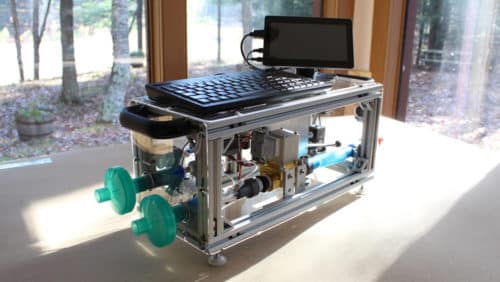A group of researchers from Princeton University and Rensselaer Polytechnic Institute began developing a concept for a low-cost ventilator that could be assembled from readily accessible components. That’s how the People’s Ventilator Project in 2020.

UO graduate student Jonny Saunders has been designing and building an open-source ventilator with the People’s Ventilator Project. The team opted to focus on something that might be used all throughout the world, particularly in locations where expensive commercial medical gadgets are unavailable. Their goal was to create a ventilator that could be made quickly and inexpensively, and that could respond to pressure changes in patients’ airways and control the rate at which oxygen was provided. The concept can be created in a couple of days by a few people for around $1,300.
The ventilator uses extremely few medical-specific components to avoid supply chain shortages. It makes use of components that can be found at any hardware shop or from any electronics supplier. The user interface and alarm system, which a medical professional would engage with while using the device, were designed and coded by Saunders. By altering the warning tone, volume, and timing, Saunders created an alarm system that drew more attention to larger and more urgent situations. Saunders also experimented with several user interface designs, gathering feedback from clinicians who use ventilators on a regular basis.
“There are software challenges, but you also need to think of the social and cognitive challenges,” Saunders said. “Your code can be technically perfect, but the real question is whether a medical professional can understand it. We did maybe 15 or 20 major revisions, working with doctors and consulting with different respiratory technicians to make sure that the interface would work as they expected it to. These are complicated devices, but it doesn’t need to translate into a complicated interface.”
Because the ventilator design is open source, it can be used in medical research as well. Researchers can make changes to the coding as needed to make it more suitable for their purposes.
Read the entire study here.







